About the Work
About the Book
Li’l Shadd: A Story of Ujima is about the first known Black person to live in Saskatchewan. Dr. Alfred Schmitz Shadd was an important part of his community. He worked as a teacher, a doctor, and a farmer. He owned and operated a newspaper, the Carrot River Journal, for four years. He was part of many community groups, such as his town council, his school board, and the Melfort Agricultural Society.
This is a historical fiction book. Some of the things that happen in this story are real. Other parts of this story were imagined by the authors, Alix Lwanga and Miriam Körner. While Dr. Shadd really did have a son named Garrison, we don’t actually know if Garrison ever helped his dad visit patients. We know that Dr. Shadd really did give medical help to Indigenous communities. And he really did help Nīkānisiw’s baby girl when she was sick.
This book was written with support from the Saskatchewan African Canadian Heritage Museum. You can learn more about Dr. Alfred Schmitz Shadd and other important Black people in Saskatchewan’s history on their website.
About the Artist
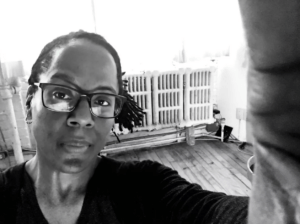
About the Connected Exhibition and Artist
Deanna Bowen: Black Drones in the Hive, is on display at the MacKenzie Art Gallery from March 23rd to August 6th, 2023. In this exhibition you will see videos, installation artworks, and groups of documents from archives and museums. The historical documents are copies of the originals. Deanna Bowen uses these art forms to make us think about the histories of Black Canadians. She also wants us to think about what Canadians decide is important to remember, and how we understand Canada’s past.
A lot of Deanna’s artwork involves researching the history of Black Canadians. She often uses archives that were made by White people, and don’t focus on Black Canadians’ stories. Deanna hopes we will all try to learn more about Black Canadian history; reading Li’l Shadd: A Story of Ujima is one way that you can start to do this!
Deanna Bowen is an interdisciplinary artist. This means she works in many different art mediums, often combining them. She currently lives in Montreal.
Things to Think About
- Who makes up and contributes to your community?
- Whose work is sometimes forgotten or goes unseen in your community?
- How can you learn about Black Canadian history?
Important Words
Ujima: a Swahili word for shared work and responsibility (Li’l Shadd, pg. 24.)
Historical fiction: a story that is based on facts about the past, but the writer has used their imagination to fill in parts of the story.
Installation art: when an artwork or group of artworks create a space for you to experience. Often installation art is meant to change how you see and think about a space.
Archive: a place where historical records are stored.
Studio Activity
Get inspired by Deanna Bowen’s research on Black Canadians throughout history! Listen to the book Li’l Shadd: A Story of Ujima, and create your own picture book to tell a story about your life.
Supplies:
- The book Li’l Shadd: A Story of Ujima, or. . .
- A computer/phone/tablet to listen to a reading
- Drawing paper
- Scrap paper
- Scissors
- Hole punches
- String, yarn, or ribbon
- Pencils, erasers, and sharpeners
- Colouring materials of your choice (crayons, markers, pencil crayons, etc.)
Instructions:
1. Listen to or read Li’l Shadd: A Story of Ujima. There are several readings of it online:
- Reading and discussion with The Saskatchewan Literacy Network, in English with American Sign Language
- Reading and discussion with The Saskatchewan Literacy Network, in French
- Reading with the Regina Symphony Orchestra
2. This is a story about ujima, or shared work and responsibility. Talk about this idea with your family or friends. Some questions you might think about include:
- What work did Dr. Shadd do that helped his community?
- What work do you do to help your community?
- Why is shared work and responsibility important?
- What would happen if no one helped each other in their communities?
3. You are going to make a picture book to tell your own story about helping your community. If you like, you can write down what you did on a scrap paper. When planning a story, it can help to think about answering the six question words: who, what, when, where, why, and how.
4. Fold a piece of paper in half. Fold it in half again.
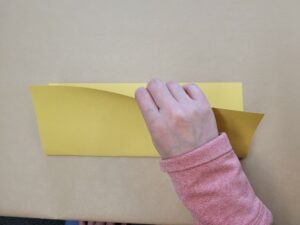
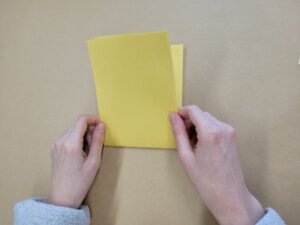
5. Along one of the folds that you want to use as the book’s spine, punch two holes.
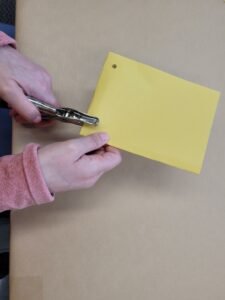
6. Thread a piece of ribbon, string, or yarn through both holes, and tie it in the front.
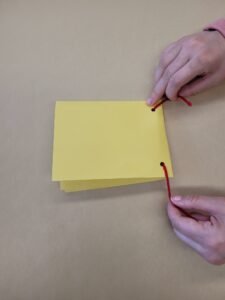
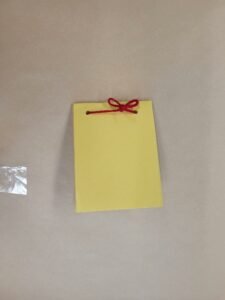
7. Cut the folds on all sides except for the spine. You should now have a book with four pages that you can turn.
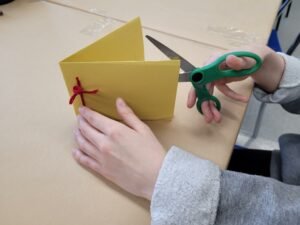
8. Write your story about helping your community in this book. Draw pictures to help tell your story. If you can’t write yet, then try to tell your story just through pictures.

